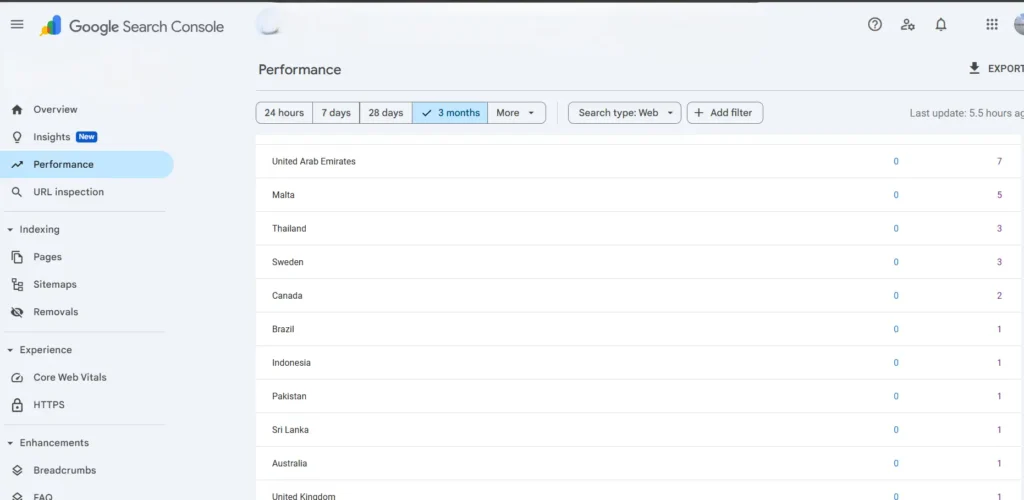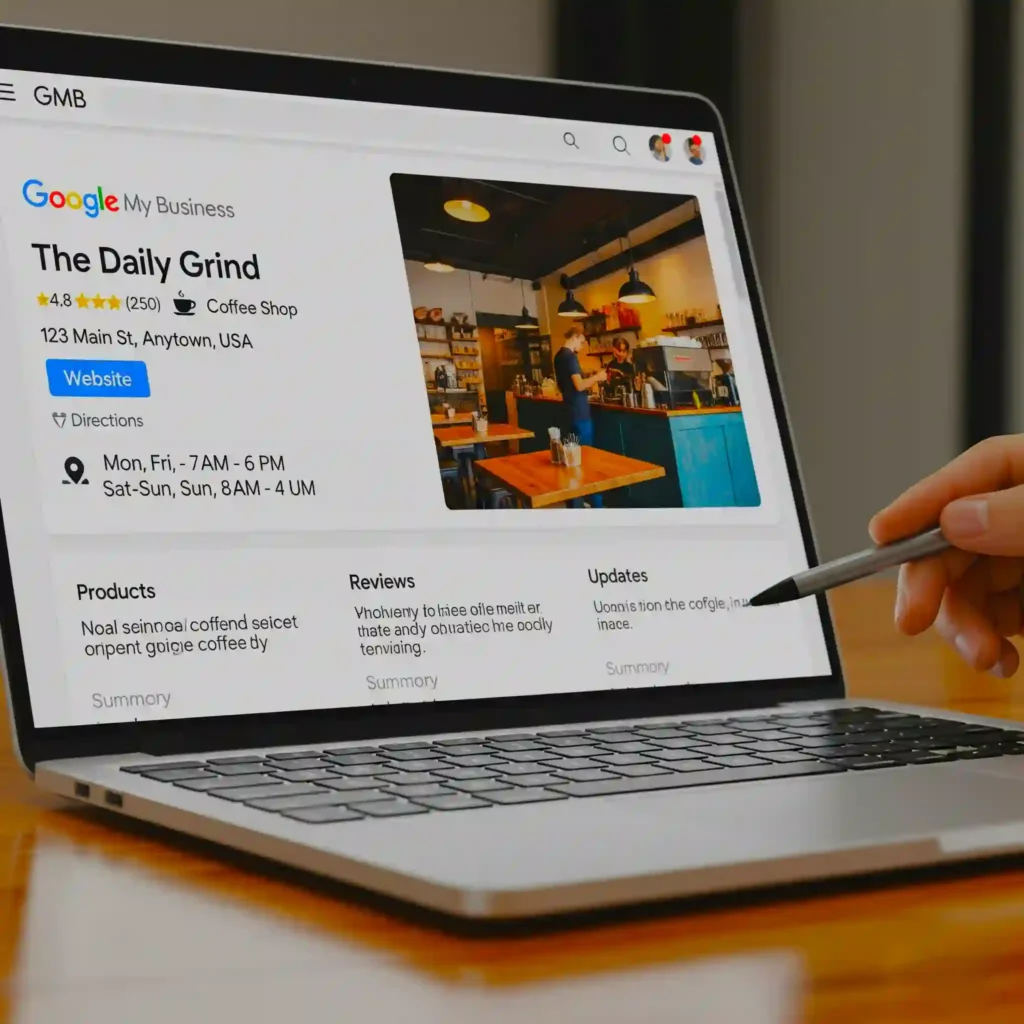#1 Local SEO Strategy: Powerful Fix for Website Ranking in the Wrong Country
Have you ever checked your website traffic and realized most of your clicks/impressions are coming from the wrong country? Maybe you’re based in India, but your site is getting visitors from the US. Or you’re targeting customers in the UK, but your website appears in Brazil.


This happens a lot, especially for small businesses and new websites that haven’t implemented a proper local SEO strategy. The good news? With a few smart steps, you can help Google understand your target audience clearly.
Table of Contents
Why Your Website May Rank in the Wrong Country
Getting impressions from the wrong country often means Google is misreading your location Relevance. There are several reasons why Google may misinterpret your site’s location signals:
- No strong local SEO strategy – Without proper signals, Google guesses based on hosting, backlinks, and content.
- Lack of schema – Without LocalBusiness schema, Google can’t confirm your business location.
- Generic content – If your pages don’t mention your city, state, or country, Google won’t associate your site with the correct region.
- No Google Business Profile – Physical businesses need this to show up in local results.
- Irrelevant backlinks – Too many links from other countries can mislead Google.
- Missing hreflang tags – For multilingual websites, skipping hreflang may confuse Google further.
How to Fix Wrong Country Rankings with a Local SEO Strategy
Even just two or three of these fixes can make a big difference to your local search visibility.
✅ 1. Focus on Local SEO Signals
The old geo-targeting option in Google Search Console is retired. Now, the key is building strong local SEO signals:
- Implement LocalBusiness schema
- Maintain a complete Google Business Profile
- Keep consistent citations (NAP: Name, Address, Phone)
- Create location landing pages and localized content
These steps help Google confidently associate your site with the right country.
While these signals are essential, they work best when tied to your overall brand positioning. Partnering with a trusted brand consulting service ensures your local SEO efforts align with a clear, long-term business identity
✅ 2. Add LocalBusiness Schema
Search engines need clear signals to understand your business location. One of the strongest signals is LocalBusiness schema.
Schema markup is structured data that tells Google important details about your business, like your name, address, phone number, and country. Adding this helps Google confidently associate your site with the right region.


You don’t need to code it manually, Tools like Google’s Structured Data Markup Helper or plugins such as Yoast, Rank Math make it easy to generate and apply LocalBusiness schema.
✅ 3. Build Consistent Citations
Citations are online mentions of your business details(NAP: Name, Address, Phone) . They strengthen your local SEO strategy.
List your business on:
- Google Business Profile
- Bing Places
- Yelp or local directories (JustDial, Sulekha, etc.)
- Social media platforms: Facebook, LinkedIn, Instagram
Always make sure your business info is consistent across platforms.
✅ 4. Create Localized Content
Generic content won’t rank well for local searches. Instead, Creating content tailored to your regional SEO goals ensures your site speaks directly to your target audience.
Tips:
Mention your city, state, or country naturally in service pages and blogs
Create location landing pages (e.g., “SEO Services in Kochi”)
Use local keywords that people in your area search for
Example:
Instead of: “We offer marketing services.”
Write: “We offer affordable marketing services for brands and entrepreneurs in Kerala.”
✅ 5. Earn Regional Backlinks
Backlinks from regional SEO sources send strong signals to Google about your location relevance.
Ways to get them:
- Join local business associations
- Collaborate with regional bloggers or influencers
- Sponsor community events or nonprofits and request a link back
✅ 6. Optimize Your Google Business Profile
For businesses with a physical location, your Google Business Profile is crucial.


Make sure you fill out:
- Address and phone number
- Business hours
- Categories
- Photos and updates
- Customer reviews
- A verified and active profile is one of the strongest local ranking factors
Final Thoughts
If your website is getting impressions from the wrong country, don’t panic — it’s not broken. Google just needs more clarity about your audience.
A strong local SEO strategy, combining schema, localized content, Google Business Profile, citations, and backlinks, will help shift your impressions and clicks to the right region.
Check your setup today and start implementing these steps to see improvements in local search visibility. Want to improve your local branding strategy? Explore how our branding expertise can help your business stand out
FREQUENTLY ASKED QUESTIONS
What is a local SEO strategy?
A local SEO strategy is a set of techniques that help a business rank in a specific geographic area using schema, Google Business Profile, citations, backlinks, and localized content.
How do I make sure my website ranks in the correct country?
Focus on local SEO signals: schema, consistent NAP, complete Google Business Profile, local backlinks, and location landing pages.
Do I need hreflang tags if I target only one country?
No — hreflang is only needed for multilingual or multi-region sites. A strong local SEO strategy is enough.
Can backlinks affect my local SEO strategy?
Yes. Local backlinks reinforce your geographic relevance to Google.
How long will it take to see results?
It may take a few weeks. Combining schema, backlinks, localized content, and Google Business Profile accelerates results.
👩💼 About the Author
Hi, I’m Athira Mohanan, a passionate Digital Marketing Strategist based in Malappuram, Kerala. With a background in Computer Science and over 4.5 years of experience in Tech field , I bring a strong foundation in technology and analytics to the digital marketing space.
I now help businesses and professionals grow their online presence through SEO, content strategy, and data-driven marketing.
🔗 Learn more: athiramohanan.com
